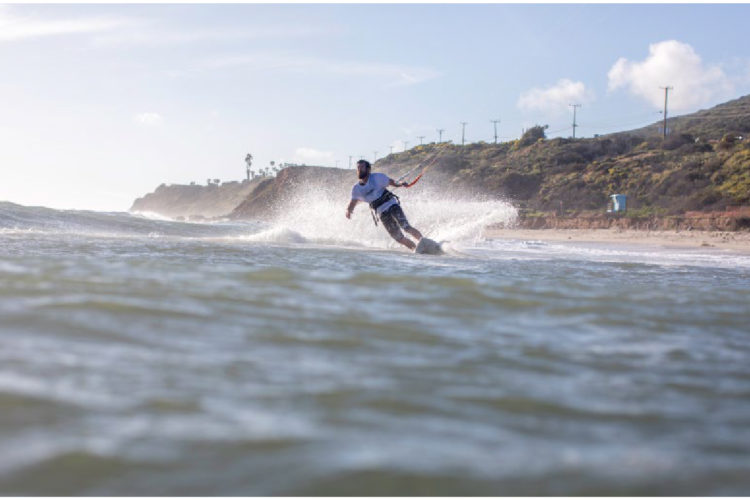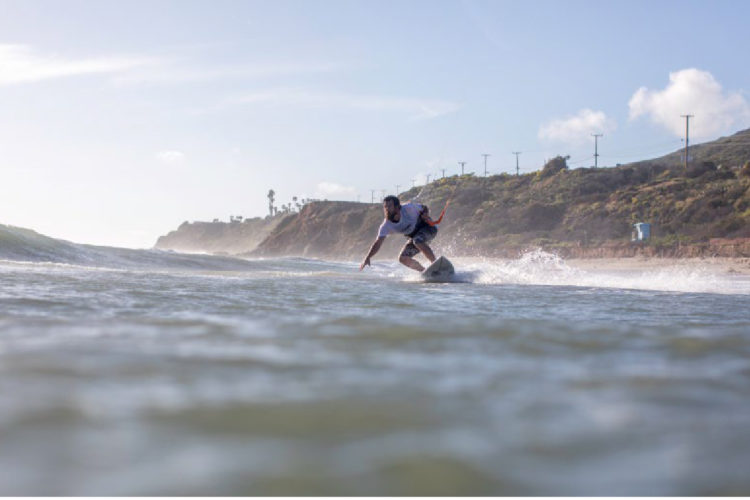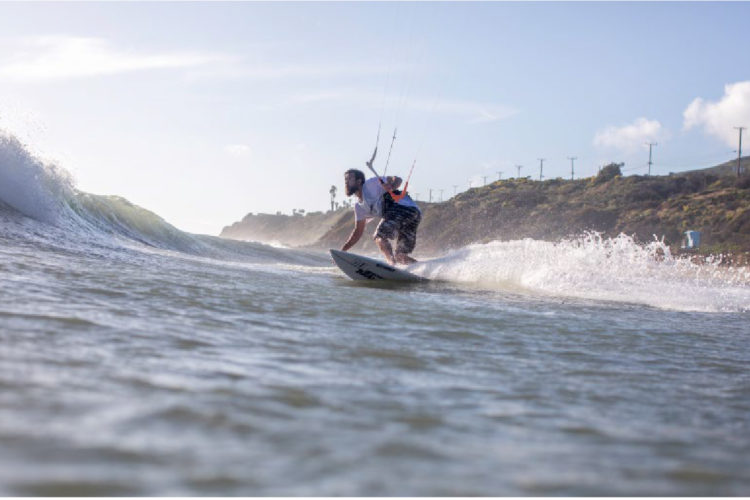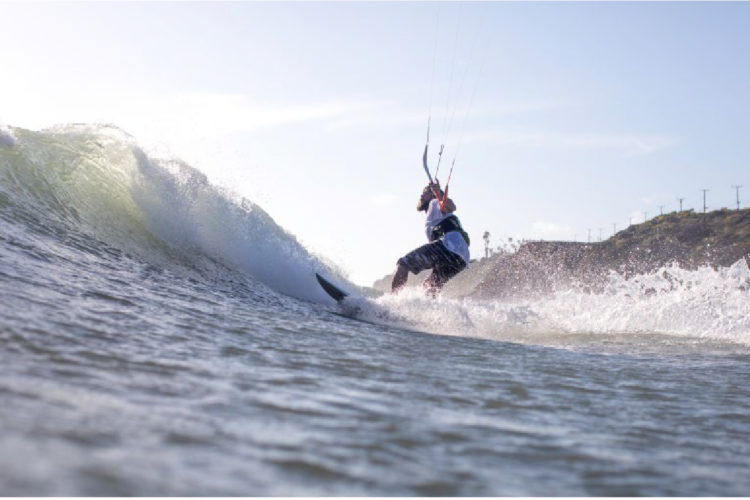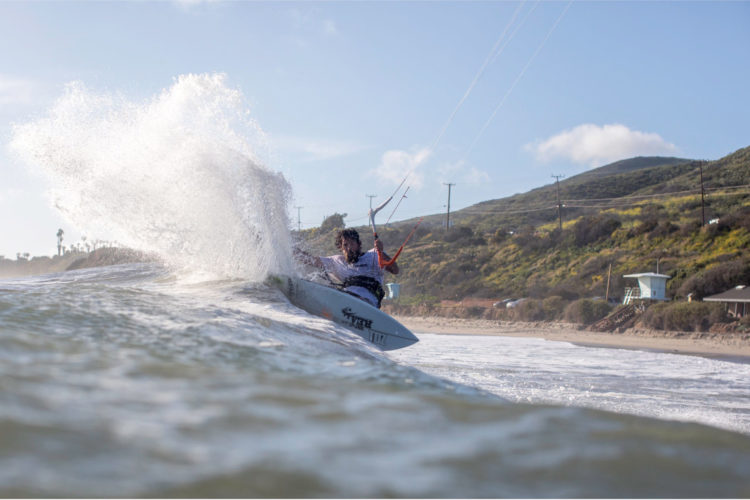I believe that the bottom turn is one of the most important maneuvers to learn in kitesurfing. Set it up correctly and the top turn will follow regardless of the conditions or the type of board you’re riding.
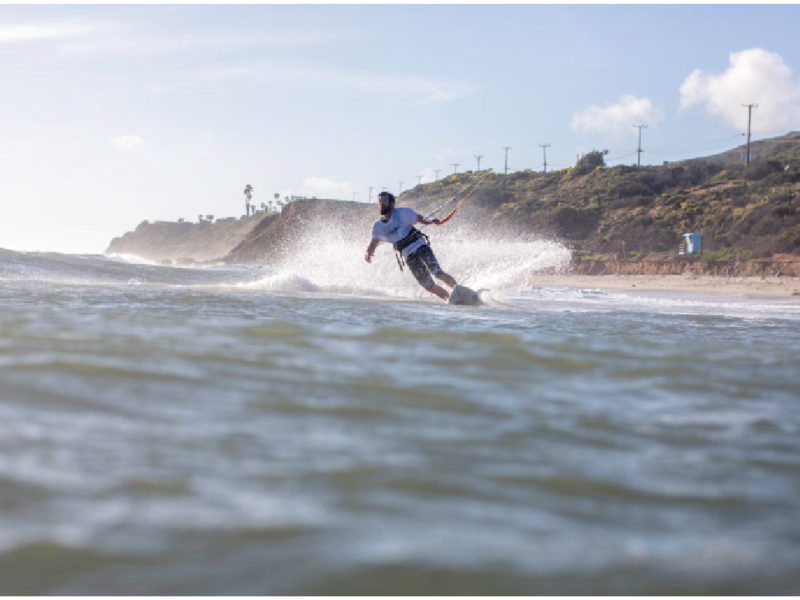
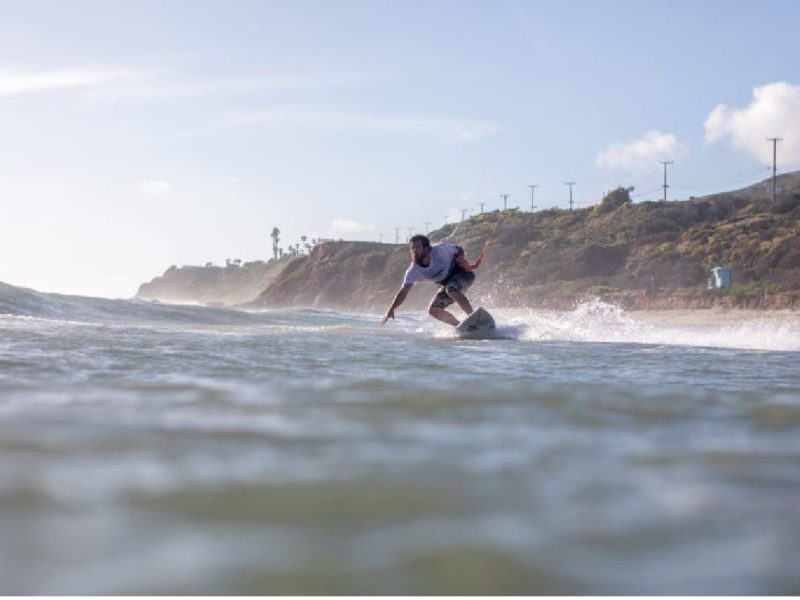
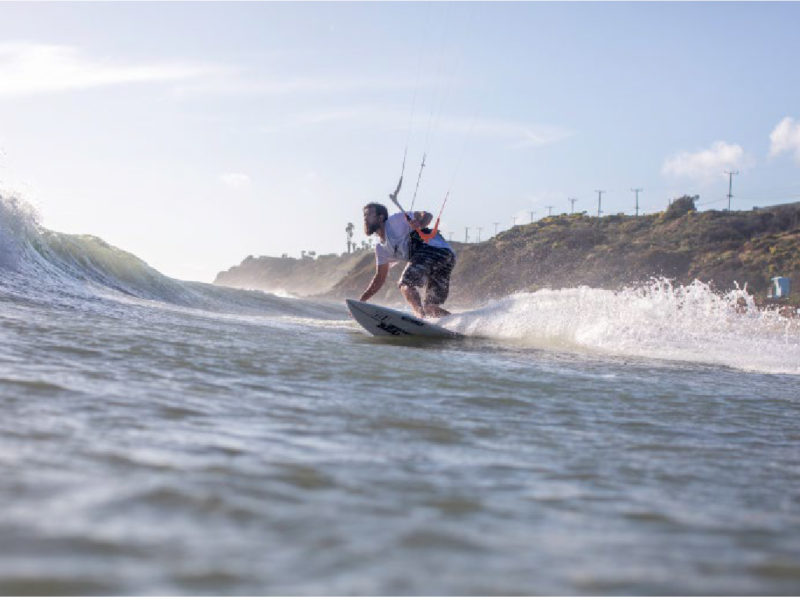
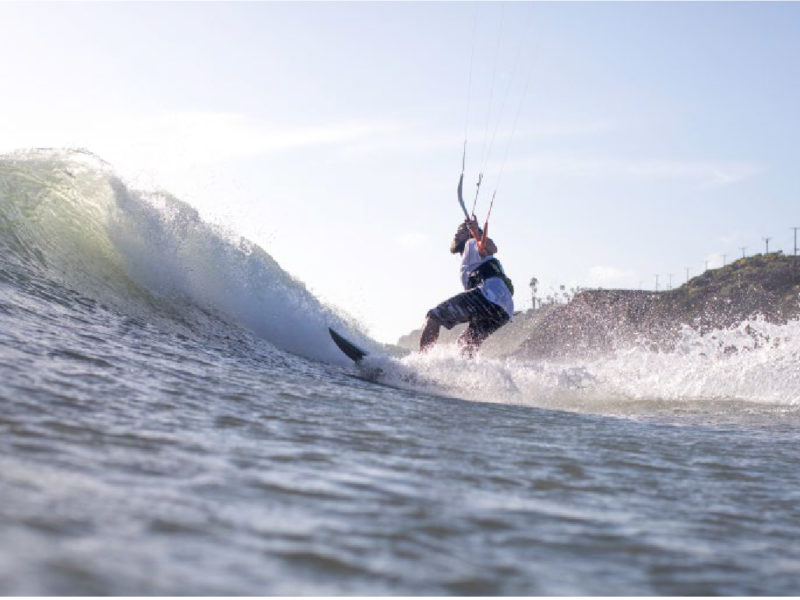
The first step in performing a strong bottom turn is controlling your speed. Keep in mind that you should turn the kite before the board and it is very important to remember that whatever type of turn you do with your kite, you need to do that same turn with the board. For example, if you do a long, drawn out turn with the kite, you need to follow with a similarly broad turn on the board. If you do a snappy and quick turn with the kite, you will want a tight and short carve on the board. Applying these techniques will help keep tension in the lines and a steady pull in the kite. The lower you fly your kite in the window the more control you will have on the board. It will be easiest to learn and practice the bottom turn when you remove the dynamic of the waves. Once you become comfortable you can try them in the surf.
Edging upwind, get some speed and place your kite nice and low. Bear off your upwind line and begin to steer your kite from 9 to about 11 o’clock in the window. At this point you should transfer your weight from your front foot to your back foot and begin your toeside turn while directing the kite across the window.
Keep your body positioning nice and low to absorb chop and remove your back hand from the bar. Push the bar out, lean forward into the turn and look in the direction you want to go. During the last half of the turn, you can straighten your legs and pull in on the bar while leaning against your kite. Exit the bottom turn with your kite at 45Ëš or about 10 o’clock with your eyes on the target.
This article first appeared in Tkb’s summer 2017 issue, Vol. 14, No. 2. Want more like this? Subscribe here: https://www.thekiteboarder.com/product/magazine-subscription/


